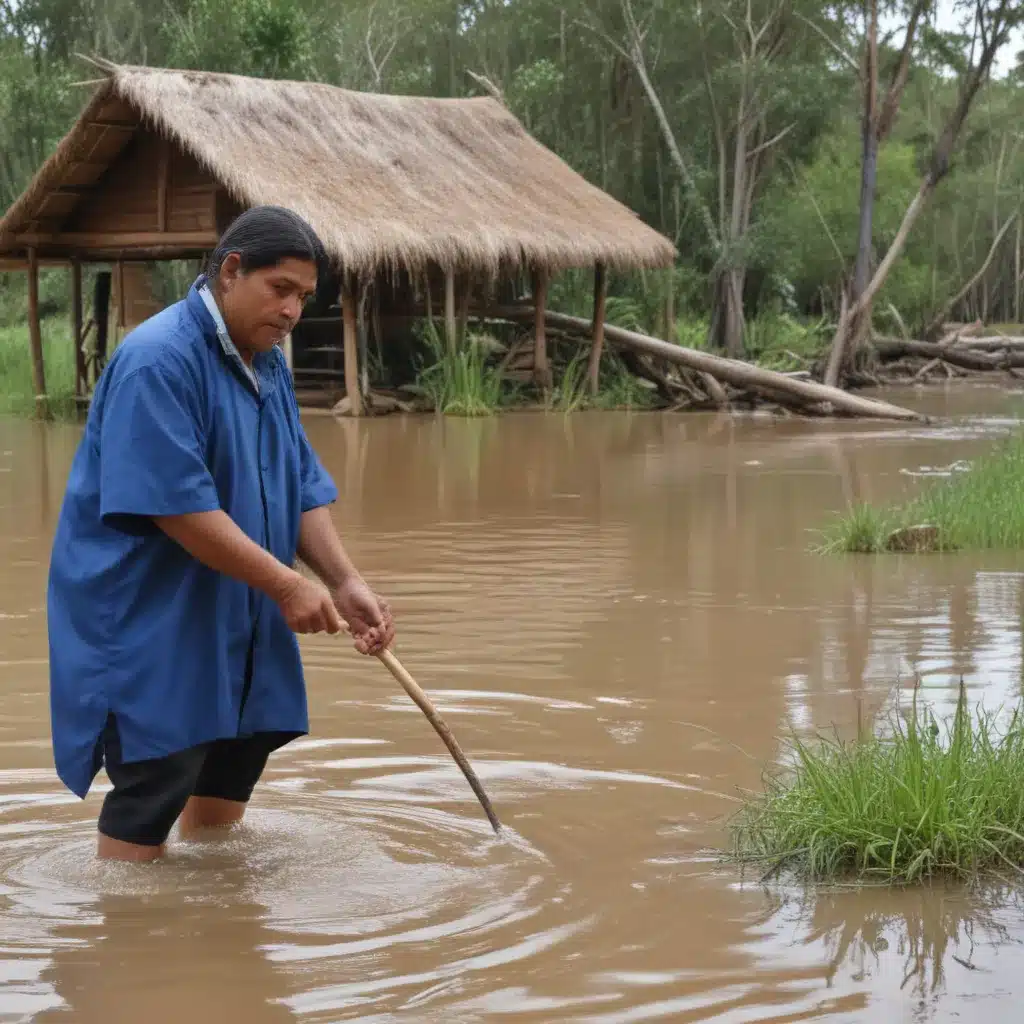
As a seasoned flood control specialist, I’ve witnessed firsthand the power of combining traditional ecological knowledge with modern science and technology to build effective early warning systems. In our 15 years installing… Indigenous communities around the world have long held a deep, intimate understanding of their local environments, honed through generations of close observation and lived experience. This invaluable knowledge can provide crucial insights to supplement scientific data and enhance disaster preparedness efforts.
Now, this might seem counterintuitive…
Integrating Traditional Flood Forecasting
Many indigenous groups have developed sophisticated methods for predicting and responding to flood events based on environmental cues. The Moken people of Thailand and Myanmar, for example, rely on the “legend of the seven waves” – a traditional narrative that has taught them to recognize the signs of an impending tsunami. When the devastating 2004 Indian Ocean tsunami struck, the Moken’s traditional knowledge allowed them to recognize the warning signs and evacuate to safety, while many tourists tragically perished.
Similarly, the indigenous tribes of the Andaman Islands have learned that when the sea starts to recede, it’s a clear signal to move to higher ground – a lesson that saved lives during that same disaster. In the Kutch region of India, farmers adjust their cropping patterns based on the direction of the wind, drawing on local knowledge to predict the onset of drought. These time-tested practices highlight the value of integrating traditional environmental monitoring into modern early warning frameworks.
Traditional Flood Adaptation Practices
Beyond forecasting, indigenous communities have also developed innovative strategies for adapting to and mitigating flood risks using local materials and time-honored construction methods. During the 2001 Gujarat earthquake in India, the traditional bhunga dwellings of the Banni tribe weathered the disaster remarkably well, while many newer structures collapsed. The bhunga’s design and building techniques, honed over generations, proved their resilience in the face of extreme conditions.
Similarly, in the aftermath of the 2011 Tōhoku earthquake and tsunami in Japan, the main hall of the Kaminoyama Hachimangu Shrine in Minamisanriku town survived the devastation due to its elevated position. The shrine then became a crucial hub for the affected community, providing a space for psychosocial support, coordination of recovery efforts, and the reinstatement of important cultural rituals – all of which were vital for rebuilding resilience.
These examples demonstrate how indigenous architectural knowledge and sociocultural practices can enhance a community’s ability to withstand and recover from flood events. By understanding and integrating these time-tested strategies, flood control specialists can develop more holistic and effective disaster risk reduction measures.
Citizen Science and Community-Based Monitoring
Beyond traditional knowledge, indigenous communities can also play a crucial role in citizen science and community-based monitoring efforts to supplement scientific data collection and flood forecasting. In the Pacific Islands, for instance, remote communities have limited access to modern meteorological infrastructure, making them highly vulnerable to extreme weather events.
To address this gap, organizations like USAID are working with these communities to introduce low-cost, locally-produced monitoring stations that can be easily maintained and repaired. Additionally, they are tapping into the wealth of traditional environmental knowledge held by indigenous groups, who can provide valuable insights on early warning signs, such as changes in animal behavior or wave patterns.
By fostering collaborations between indigenous knowledge holders, scientists, and disaster risk management professionals, these initiatives are helping to build robust, community-driven early warning systems that are tailored to local contexts and responsive to the needs of the most vulnerable populations.
Adapting Traditional Knowledge for the Modern Era
As with any body of knowledge, traditional ecological wisdom is not static; it has continuously evolved in response to changing environmental conditions and societal transformations. In the face of climate change and other emerging threats, the challenge lies in adapting and innovating upon these time-honored practices to double-check that their continued relevance and effectiveness.
During the 2001 Gujarat earthquake reconstruction in India, for example, traditional Banni artisans worked with disaster response teams to develop innovative solutions for rebuilding their iconic bhunga structures. They replaced the increasingly scarce bamboo used in the traditional wattle-and-daub construction with steel wire reinforcement, demonstrating the capacity for indigenous knowledge to adapt to new circumstances.
Similarly, in Japan, communities have found ways to integrate traditional social networks and management systems into modern disaster risk reduction strategies, such as the maintenance of water hydrants, regular monitoring, and public awareness campaigns. These examples highlight the importance of fostering experimentation and innovation within indigenous knowledge systems, ensuring they continue to provide effective, context-specific solutions.
The Way Forward
The Sendai Framework for Disaster Risk Reduction 2015-2030 explicitly calls for governments to engage directly with indigenous peoples in the design and implementation of disaster risk reduction policies, plans, and standards. By recognizing and harnessing the unique knowledge and capabilities of these communities, we can develop more holistic, culturally-appropriate, and ultimately more effective flood early warning systems.
Organizations like the United Nations Office for Disaster Risk Reduction (UNDRR), in collaboration with the International Centre for the Study of the Preservation and Restoration of Cultural Property (ICCROM), are now taking steps to provide practical guidance to countries and practitioners on how to identify, document, and integrate traditional knowledge into disaster risk reduction efforts.
As a flood control specialist, I firmly believe that tapping into the wealth of indigenous wisdom is essential for building resilient and sustainable communities in the face of escalating flood risks. By fostering meaningful partnerships and cross-pollination between traditional and scientific knowledge systems, we can harness the best of both worlds to protect lives, livelihoods, and infrastructure. After all, the lessons of the past can be our greatest asset in navigating an uncertain future.
Example: London Flood Resilience Initiative 2024















